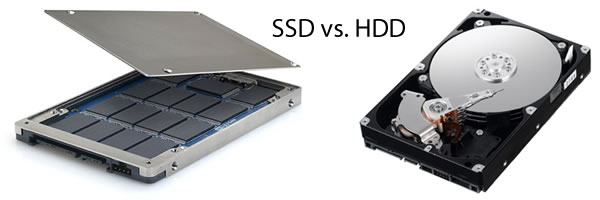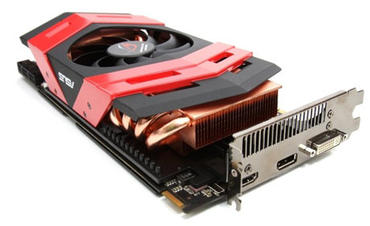All modern computers (PC, Mac, desktop, laptop, tablet, smartphone, video game system, etc.) have many parts in common. They all have a power source and distribution system, motherboard/logic board, processor, temporary memory (RAM), permanent memory/storage (hard drive or solid state drive), video/graphics processor, and likely a display/monitor. For this post, you can assume that I am talking about a desktop computer unless otherwise stated. Also, this is meant to be a general description of each of these components. I will be writing more detailed posts about most of these components in the future.
Power System: You plug a power cable into the wall and it goes into the computer. What happens from there? In every computer system you run across, there will be a power supply unit (PSU).
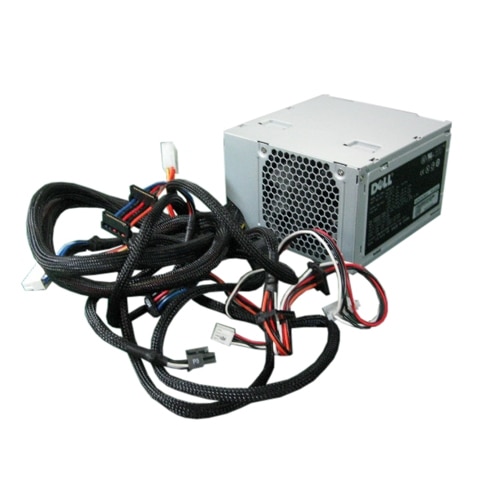
The PSU takes the power supplied from the electrical system in your home or business and converts it to the appropriate voltage and wattage required by the various components in your computer. The largest of the cables coming from the PSU connects to the motherboard and provides power to all of the components embedded in, or connected to the motherboard. In recent years, some components that connect to the motherboard (processors, video cards) have become so powerful they need additional power beyond what is available in the 20 or 24 pin connector from the PSU and there will be additional cables/plugs available to power these components.
Motherboard/Logic Board:
This picture below is from www.trustedreviews.com – and shows a motherboard from 2006. The vast majority of the technology in this motherboard has been upgraded or replaced in that time, but the look and feel of motherboards has not changed all that much in the last 10-15 years. 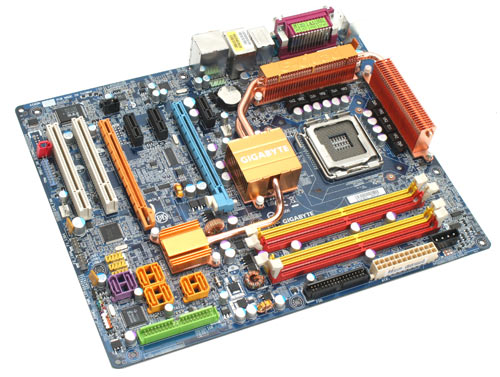
What does a motherboard do? Every component of the computer touches the motherboard. The power supply connects via either 20, 24 or 28 pins in one or two locations (on this motherboard, you see a white connector along the bottom that has two rows of 12 pins). The memory is inserted into the slots just above the power connection. The processor sits in the square socket surrounded by a metal retaining clip to ensure it is firmly seated in the socket at all times. This particular motherboard, and many others, has a set of cooling pipes and heatsinks (all in copper) to distribute heat without the need for cooling fans. There are ports (orange, purple and green) in the lower left corner to connect hard drives, solid state drives, cd/dvd/bluray drives. In the upper left corner of this motherboard you will see different slots to connect video cards, sound cards, network cards, PhysX cards (not very common), etc.
The motherboard is the interstate highway system of your computer. It connects all of the components to each other through various data connections called buses.
Processor/CPU:
The processor handles all of the computational tasks inside your computer. When you boot your computer, the processor is involved in loading the operating system into memory(RAM), load device drivers, creating the graphical user interface, everything. Everything goes through the processor before you can begin to use each piece of software.
This image is from www.anandtech.com and shows one of Intel’s highest performing consumer processors from a few years ago.
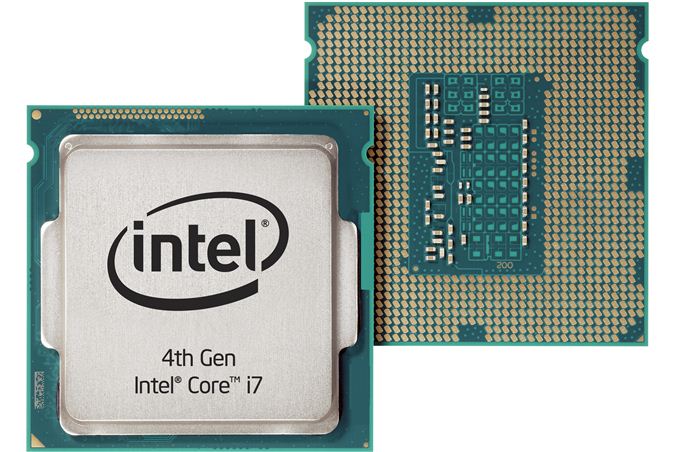
Memory/RAM:
RAM (Random Access Memory) is where your computing environment lives. What do I mean by that? You push the power button, your computer begins to boot up. Your Operating System (Windows, Mac OS, Linux, iOS, Android, etc.) initializes and building the environment you will see on your screen and the services that run in the background that you don’t even think about (your desktop background picture, screen saver, antivirus, sound, and the services that allow you to interact with the computer or mobile device like the keyboard, mouse, touchscreen interface, etc.).
Now you have your computer up and running and you are able to launch a program; perhaps an email client or web browser, a photo editor, calendar, etc. Each program you have running moves into RAM and occupies storage space there. Your computer or mobile device has a finite amount of RAM and will eventually run out of space for programs, background services, widgets, etc. What happens when you don’t have enough free RAM and you want to continue to use your computer/tablet/phone? Virtual Memory! Your computing device carves out a small chunk of hard drive space and utilizes it like RAM. This is a very convenient, and historically affordable workaround. In years past, and in many cases today, permanent storage (hard drives, solid state drives), offer a much more affordable storage medium than RAM. The problem, especially 20 and 30 years ago, is that hard drives are much slower than RAM, a few orders of magnitude slower -anywhere from 1,000 to 10,000 times slower than RAM.
When you are done with the application or background service, the space it is occupying in RAM is freed up for the next time it is needed. When you turn off your computer (yes, a restart counts as turning off your computer) everything in RAM is lost. The next time your computer boots up, all of the RAM is free to be used as needed.
The analogy I use to describe RAM is to think of a road or interstate system that is used to transport goods between various locations. The more roads you have, the more you can transport at the same time. RAM works in a very similar way; the more RAM you have, the more you can do with your computer without lag or the computer feeling bogged down.
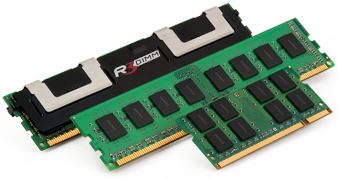
Permanent Storage:
RAM holds all of the data that is “live” or is being used currently. Hard Disk Drives and Solid State Drives are permanent storage devices that hold your files until you decide to delete them (or the device fails). If you look at the graphic below, you will notice that hard disk drives are similar to a record player. There is a flat disk that has data and there is an arm with a needle at the end that reads and writes the data on the surface. If you look closely, you will see there are multiple flat disks sitting on top of each other on a spindle and the arm you see is not just one arm, but one arm for each for the top and bottom of each disk/platter in the spindle. The arms all move together and the data that you write to the hard drive is spread across multiple disks/platters.
Solid state drives have no physical moving parts and made up of many banks of memory chips (similar to RAM) that retain the information after the drive loses power, something that RAM chips do not do. They also tend to use much less electricity and produce less heat. If you have ever used a USB Flash Drive to move files around, you have already used a type of solid state drive, just very slow and somewhat clunky. Smart phones use a similar type of flash memory as their permanent storage device.
The great part about hard drives is that you can get a lot of storage capacity for not a lot of dollars. The largest capacity drive (as of this writing) is 10TB. The downside is that they have a relatively high failure rate compared to solid state drives and are considerably slower. In my many years of experience working for universities or customers I have found that the most common component to fail in any given system is the hard drive. You will notice that many new computers still use hard drives because most users are more interested in the amount of data they can store on their computer and the price they are paying for that computer. A good 1TB laptop hard drive can be purchased for $70-$90 depending on the market conditions. A 1TB solid state drive can be purchased for $400-$500 depending on market conditions.
This image was found at eboxlab.com
Graphics/Video Card:
The graphics/video card in your device works with the operating system and applications to create the video you see on your display. For high-end systems that are built to play high-end video games, edit video, or create high-end content for games or video, there are hundreds of options for video cards ranging from thirty dollars to thousands of dollars. These cards, in many ways, are like small computers themselves. They have GPUs (graphics processing units), memory, high-speed data buses, etc.
Many modern computers have the graphics/video card integrated into the motherboard. This saves money on buying more components to plug into the motherboard, frees up space in the case, produces less heat, and is more convenient for device manufacturers. The downside to having an integrated video card is that some of the work is offloaded to the CPU and can cause slower performance in very high-demand video applications. The good news is that almost all integrated video cards for the last 5 years have been able to have flawless playback of high definition videos. For the vast majority of computer users there is rarely a need to have a discrete graphics card added to the system. One thing that you should know if you are buying a laptop: you can almost never add a graphics card to a laptop. If you want to have a discrete graphics card in your laptop, make sure it has one when you buy it; there is no upgrading that component in the future.
This image is from zdnet.com.
